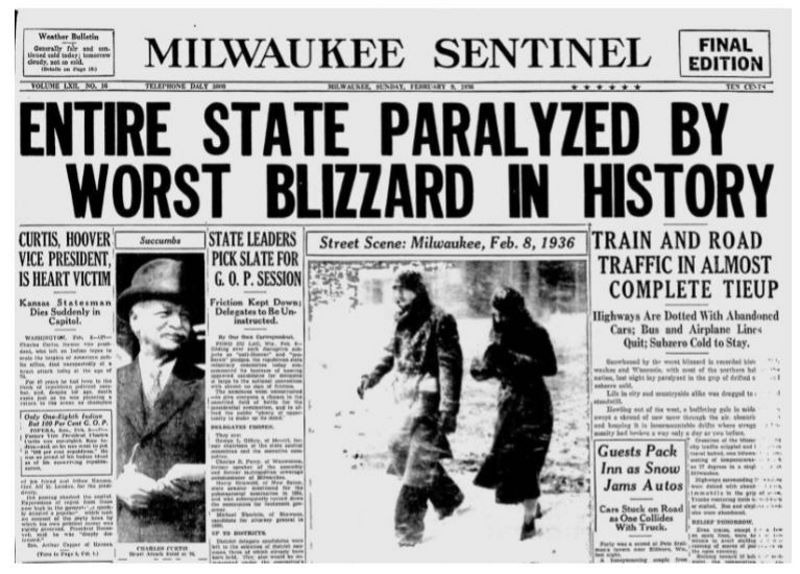About SSFP
About Us
Student Application
Subscribe to Our Newsletter
SSFP in the News
Members of Our Publishers Circle

Although many people have a very loose definition of a blizzard, the official classification requires the storm to last for longer than three hours with winds of at least 35 miles per hour.
Light blizzards are merely just a part of the weather in many places. Today, if you’re stuck in traffic, you can turn on the heat and listen to the radio, or if you’re at home, you can watch TV, read a book and just relax. But back in the 1800s and early 1900s, these luxuries didn’t exist. There were no government services to assist people in need, and if you hadn’t stocked up on food, chances were you would go hungry. Houses were many times eaten by animals, destroying insulation and roofing.
Having your house eaten is always bad news, but more so in colder areas such as Wisconsin – one of the coldest states on average in the US. The record low was -55 degrees Fahrenheit in 1996, in Couderay (15 years prior, Couderay hit 53 degrees below). The lowest recorded temperature in the United States was just 15 degrees lower, at -70 degrees Fahrenheit. Current daily averages in the winter are seldom above 30 degrees Fahrenheit, while lows can be well in the negatives. In Lancaster, throughout February 7th and 12th of 1899, the average daily high temperature was negative 5.7 degrees and the average low was negative 24.7. To put that in perspective, the coldest Wisconsin has been in the past 10 years has been -29 degrees Fahrenheit, while California and Florida’s lowest was just 37 and 28 respectively.
Throughout February 8th through 10th of 1936, Wisconsin was hit by a blizzard, lowering temperatures to well below zero and winds causing 10 to 12 feet drifts. The Monday after the blizzard, milk supplies in Chicago were down 40 percent due to the storm. No deliveries could be made, and farmers had to store milk wherever they could. In November of 1913, an “extratropical blizzard” hit the Great Lakes, with winds of up to 90 miles per hour, creating 35-foot waves. These waves destroyed ships on the water, resulting in 250 deaths, 19 stranded ships, and 19 sunken ships.
And perhaps the most infamous blizzard in the Midwest, the Armistice Day Blizzard, occurred on November 11, 1940. Afternoon temperatures were in the 60s, and many people took the day off to go hunting. Nobody brought any clothes for cold weather, which was devastating when the blizzard suddenly occurred, dropping temperatures by 50 degrees. Along with the decrease in temperature, there were also 50-mile-per-hour winds and 27 inches of snow. Boats were swamped, people were stranded, and many people froze to death. The official count was 145 casualties.
Even though Wisconsinites and other residents of cold states have adapted well to the cold weather, you can’t be prepared for everything, as was the case of the Armistice Day Blizzard. Although the chances of it happening again are low, you never know when you could be caught in a 50-degree temperature drop.
[Sources: Grant County Historical Society; wisconsinwatch.org; Milwaukee Journal Sentinel]
Loading Comments...